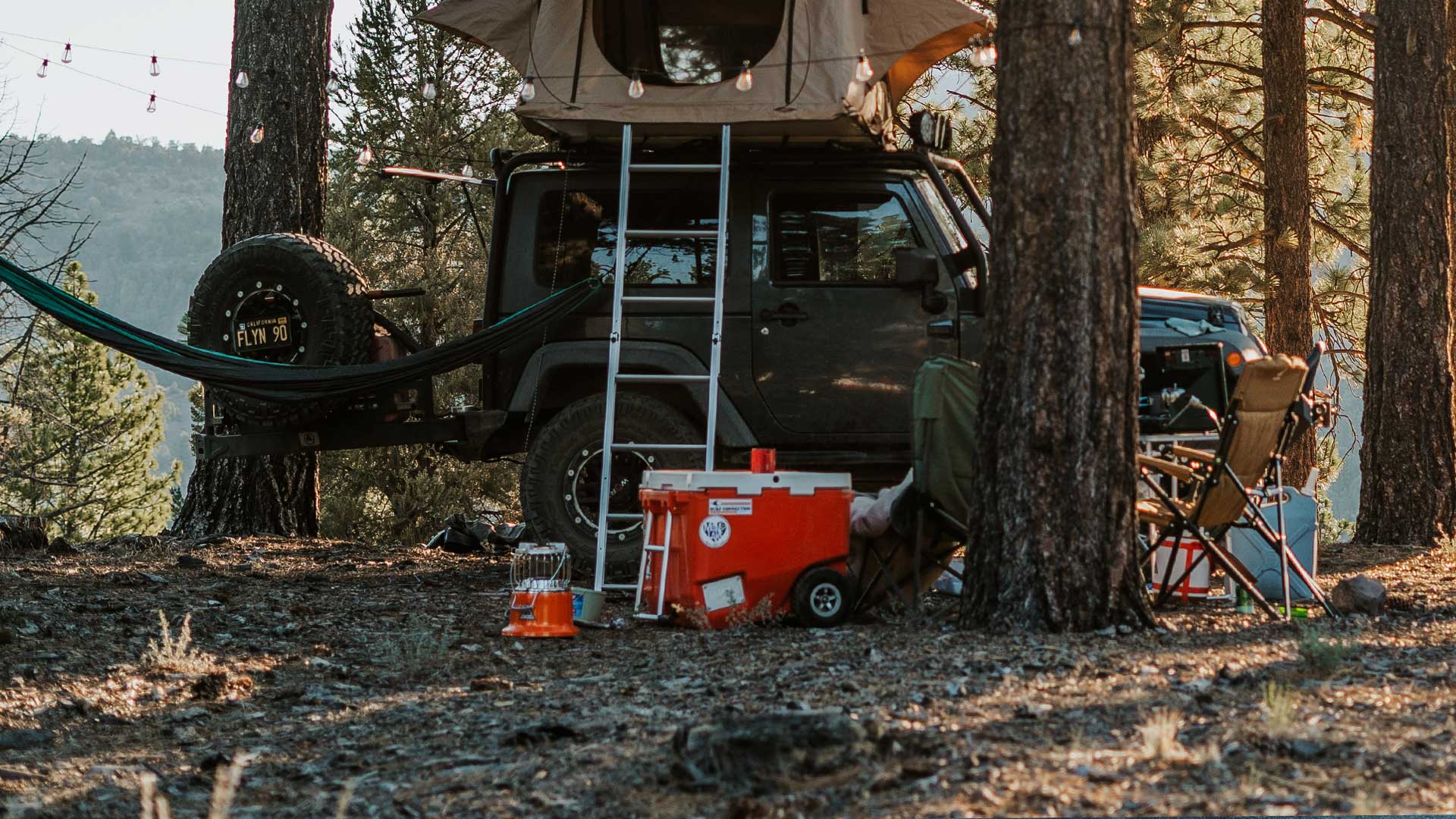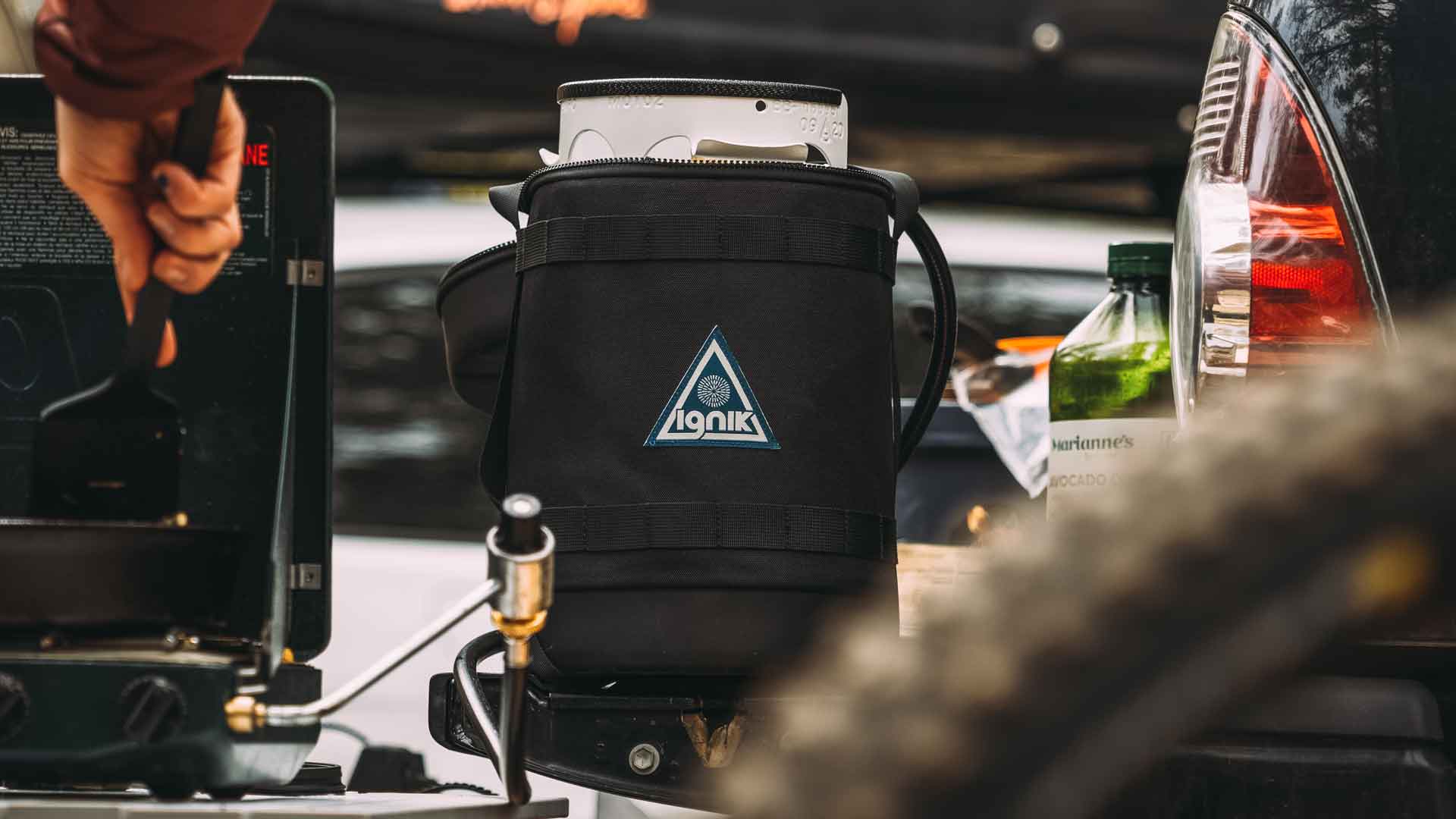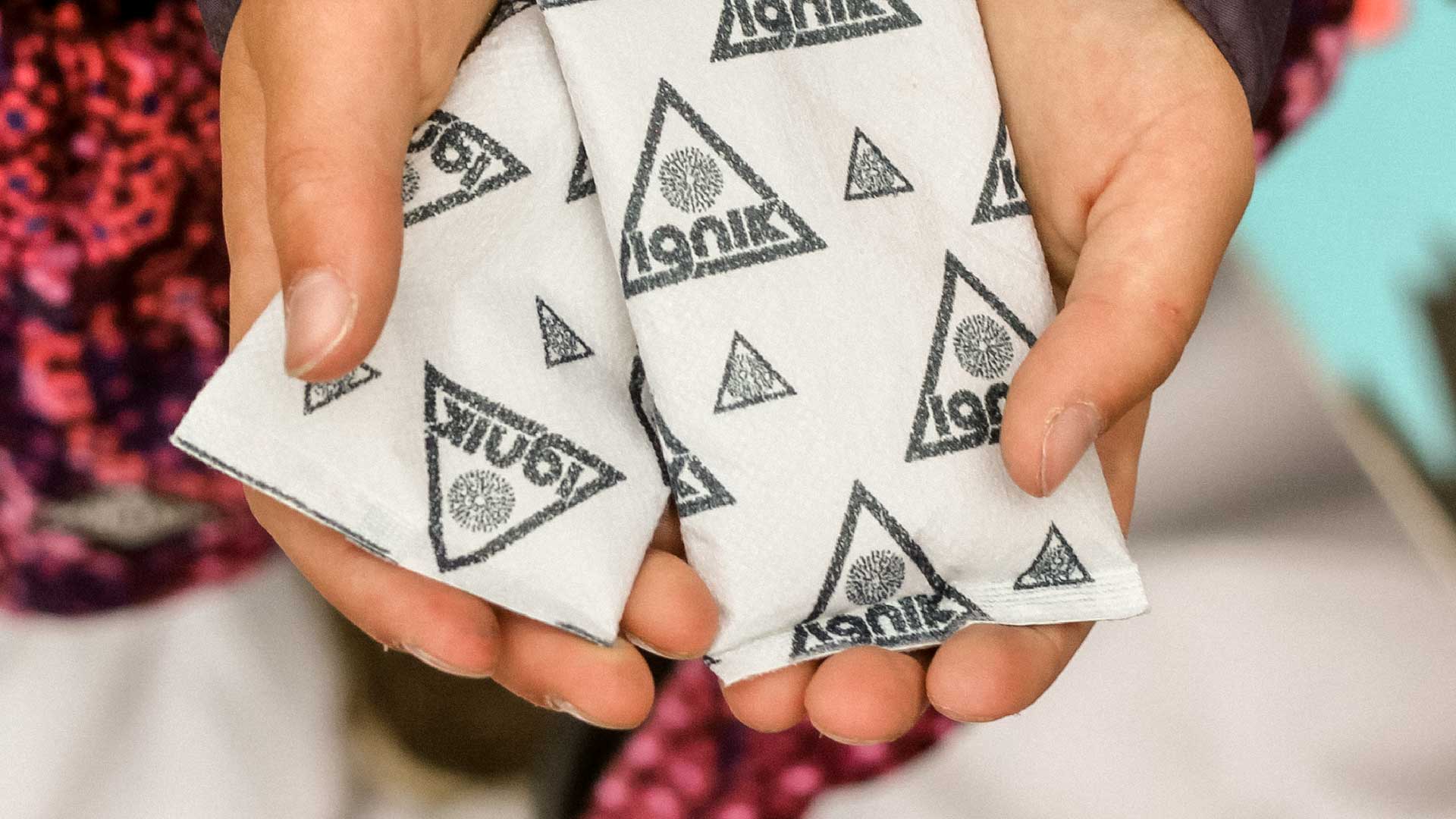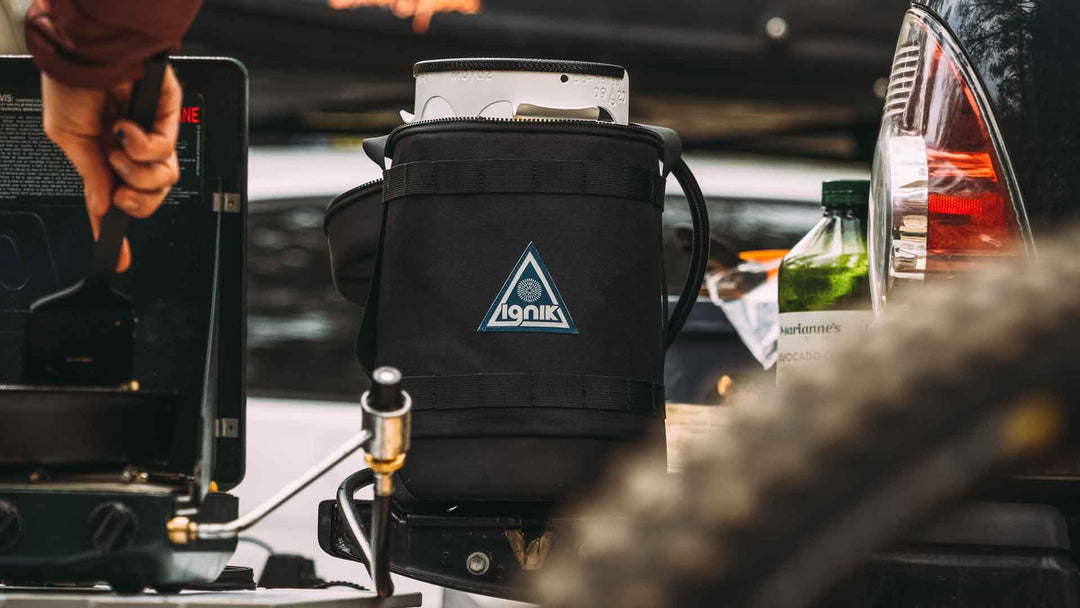The Definitive Camp Guide to
Sustainable Propane
Refill, recycle, or throw away? What to do with your propane bottle at the end of the adventure.
Propane is a convenient, affordable, and efficient fuel source that is commonly used by outdoor enthusiasts to power their adventure. The iconic green one-pound propane canisters can be found in every outdoor retailer, campground, and garage full of adventure gear. Propane fuel burns cleanly, with a lower carbon output than gasoline, diesel, heavy fuel oil, or ethanol. Cooking without contributing to climate change? A big win!
The problem comes when that propane bottle is empty
What should you do with it then? Seeking an answer on google can lead you in dizzying recycle-refill-dispose circles. Most recycling centers turn them away, they can be dangerous to refill, and curb-side trash services won’t take them either. As someone who has spent plenty of time contemplating propane usage and how to reduce my own waste impact, I want to break down the myths and the ambiguity about the best way to fuel your outdoor activities, so you can get back to cooking, heating, and adventuring.

What is Propane
Propane is an LPG, or liquified petroleum gas. It is a non-toxic, colorless, and odorless byproduct of domestic natural gas processing (little known fact: the smell of propane is actually added during production to make detection easier). It is an affordable and efficient fuel for cooking, grilling, heating, and lighting in outdoor settings. The gas is compressed and stored under pressure in metal containers of various sizes. Portable containers range from 1-pound (16.4 oz), like those iconic green cylinders, to 20-pound (4.7 gallon), most commonly found under the grill on the back deck.
Among the many fuel types available for outdoor adventures, propane is one of the most popular. Propane has a higher boiling point than white gas and butane, other common fuel choices, which makes it the most efficient in cold temperatures.
White gas used to be a popular fuel choice among outdoor enthusiasts but has mostly been replaced by propane and butane. White gas is stored as a liquid, often in metal containers similar to a standard paint thinner can. With white gas, it is easy to measure out exactly how much fuel to carry for the adventure but its inefficiency, especially in cold temperatures, means the amount needed will be heavier than the same capacity of propane or butane.

Iso-butane, an isomer of butane, is a lightweight, efficient, and cost-effective fuel source. It has become increasingly popular on outdoor adventures and comes in a variety of sizes. While many outdoor-oriented stores now carry iso-butane, it is still not as prevalent to buy as propane and, like white gas, does not perform as well in cold temperatures.

The problem with disposable propane bottles
While propane as a fuel source is environmentally friendly, the disposable canister it often comes in is decidedly not. The common 1-pound size is convenient but doesn’t last very long; as a heat source, it only supplies heat for about an hour. And though they are affordable, at $4-8, 80% of that cost pays for the container and only 20% for the fuel you need. Perhaps most surprisingly, because propane under pressure is highly flammable and therefore considered a hazardous material, it costs more to dispose of these containers than it does to produce them.

It is estimated that there are 60 million single use 1-pound propane bottles purchased in the United States every year. The majority of those end up in the landfill, requiring about 5 million cubic feet of landfill space. If you could cover a football field from end to end with used propane bottles, the pile would be 92.5 feet tall, twice the height of the field goal posts! And then there are the ones that don’t even make it to the landfill, the ones rusting along the beach and in the woods. So, how do you avoid sending those empty propane bottles to the dump or into the ocean when the adventure is over? There are a few options.
Can you refill small propane bottles
There are countless YouTube videos available demonstrating how to refill small disposable propane bottles from larger ones. Watching these videos, it seems like a benign way to save money and many people successfully refill their small tanks without issue. However, according to a Department of Transportation regulation, it is illegal to transport what they classify as DOT 39 “non-reusable” cylinders that have been refilled. The penalty is up to a $500,000 fine and 5 years’ imprisonment.

There is a reason behind this strict prohibition. Disposable propane bottles are not held to the same rigorous manufacturing standards as refillable tanks. The walls are thinner and the added stress of pressurization can cause them to fail dramatically. There is no bleeder valve to prevent overfilling, which can cause the bottle to leak or explode. The valves are not meant for repeated use so they can develop leaks over time. Because propane is heavier than air, it accumulates down low where it could easily come into contact with a spark and explode. For every dozen YouTube videos of successful refills, there is a disturbing story of a simple at-home refill gone horribly wrong.
Refilling small propane bottles is a good way to keep them out of the landfill and save money, but it is hard for many to reconcile the financial savings with the risk of explosion.
How to recycle propane bottles
If refilling seems too risky, how about a recycling program? The metal canisters containing propane are recyclable as mixed metal; however, to be recycled they first must be completely empty. Even a tiny amount of propane remaining in the bottle can cause it to ignite when crushed. Because of this risk, most municipal recycling facilities won’t accept propane bottles without clear visual confirmation it is completely drained.The D.I.Y. Approach
It is possible to prepare your propane bottle for recycling. First, hook it up to a stove, lantern, or heater and turn it on until all of the propane is gone and the flame goes out. Then very carefully puncture the container and rinse it out as best you can. Because propane fuel is a flammable liquid, there can be absolutely no residue left in the container. Some bottles come fitted with a Schrader type valve that can be removed with a special tool to ensure the tank is no longer under pressure. Once the valve is punctured and the tank is completely empty, it can technically be recycled as mixed metal, but still many recyclers will not recognize that this work has been done and will refuse to accept the bottle. To make the point quite clear, if you have the right tools, you can then cut the bottle in half and drop it off at a recycling facility.
Abandoned Coleman “Green Key” program
In 2009, Coleman, one of the leading sellers of disposable 1-lb propane bottles, started a recycling initiative in which they included what they called a “green key” with every bottle sold. Once the bottle was empty, Coleman encouraged its customers to insert this green key into the valve to relieve pressure and finish draining the propane. The key then locked onto the bottle, indicating to recyclers that the canister was empty and safe to crush. Unfortunately, it was not enough to assuage recyclers, who continued to turn away propane bottles, and the program was abandoned a year later.
Recycling programs in National Parks
In the summer months, as thousands of Americans flock to National Parks to explore and enjoy the natural wonders in this country, disposal propane bottles clog trash cans and dumpsters throughout the parks. Yosemite National Park provides separate collection bins for propane bottles that amass 20,000-25,000 bottles every year. According to Jodi Bailey, a program manager for the Zero Landfill Initiative at Yosemite, it requires seven drivers and 42 collectors working seven days a week to collect and dispose of all of those bottles properly. That averages out to a cost of about $3 per bottle, or $60,000-$75,000 per year, money the park would much rather spend improving the experience for its customers. (waste360 article)
Brad Fimrite of Mountain States Environmental Services and Wayne Wilson of WWW Industries were disturbed by the dumpsters full of propane bottles in national parks. In their spare time, they built a clever machine, called the Propane Bottle Recycler (PBR) and pitched it to national parks around the country. The PBR safely punctures the prevalent 1-lb disposable canisters six at a time, drains and stores any residual propane, and then crushes the canisters. The best part is that it uses that stored residual propane as its own fuel source to operate.
The downside is that each PBR costs about $62,000 and still requires park staff to collect bottles, feed the machine, and take the resulting scrap metal to a recycling facility. It is a better solution than sending them to a landfill, but the financial and staff burden on parks has restrained the program from taking off.
The refillable solution
If none of these options seem feasible for you, don’t worry; there is another option. Instead of stocking up on disposable propane bottles, invest in a small refillable tank. The 20-pound tank under the grill on your back deck is an example of a refillable tank. It holds about 4.7 gallons of propane and when it’s empty, you can take it to a hardware store or gas station to either have it refilled by a licensed propane filler or trade it in for a full one supplied by a propane supplier.
There are advantages and disadvantages to these programs that are worth considering. Exchanging an empty tank for a full one is convenient and ubiquitously available at gas stations, convenience stores, hardware stores, and national chains such as Home Depot and Walmart. In order to stay in rotation, the new-to-you tank will have been inspected, cleaned, and leak-tested before filled and offered for exchange. Quick, easy, reliable. However, the exchange program ends up being more expensive than refilling, and you get less fuel at the end of the day.
Many gas stations and hardware stores will have the facilities and training to refill a propane tank while you wait. It is more time consuming than simply swapping a tank and doesn’t provide for a routine professional cleaning and inspection, but pound for pound it is cheaper than the exchange program. In the Pacific Northwest where I live, it costs $3.17 per gallon to refill a propane tank at U-Haul, which comes to $14.90 for a 20-pound tank. Other refill options are at many Chevron, 76, and Shell gas stations. Amerigas offers a helpful search feature on their website for locations to refill or exchange propane tanks.
Home Depot charges $24.99 for each tank exchange, which is a full $10 more expensive than refilling it at U-Haul. And the savings go further than that. When your tank is refilled, you only pay for the weight of the propane added to the tank. If there are still three pounds of propane in the tank getting refilled, you will only pay for 17 pounds’ worth of propane, not the whole 20. It has also recently come to light that many propane suppliers fill exchanged tanks to only 15 pounds and still charge the same 20-pound price. Propane is inexpensive enough that the difference is only a few dollars, but it can add up over time and less propane in each tank requires exchanges more often.

Of course, participating in the exchange program presumes you use the universally sized 20-pound tanks. I suppose you could grab that 20-pound tank (that actually weighs close to 40 pounds full) on your next backcountry adventure. The fuel would certainly last a very long time and would be easy to swap out or refill when empty, but it is perhaps a bit too cumbersome to lug around in a backpack or a kayak.
There are 1-pound refillable tanks on the market, which is a great alternative to both lugging around 40 pounds and burning through the disposable bottles. But with only 16.4 ounces of fuel, you may still need to carry several bottles. With a higher upfront cost per bottle, this might dispel any long-term cost savings. To refill these bottles at home requires also buying a larger propane tank and special adapters, and can still be dangerous if done improperly.

The happy medium is a portable propane bottle that holds enough fuel for the adventure but is still compact; is portable but also refillable. Traditionally, these tanks have been available but expensive, targeted at specialized markets such as boating and RVing. But that is changing. Now there are mid-sized refillable tanks, such as Ignik’s 5-pound (1 gallon) gas growler. These are small enough to pack easily but big enough to fuel the whole trip. The tanks last 10-12 years and each fill up cost about the same as a new disposable 1-pound bottle, but you get 5x as much propane without adding anything to the landfill.
No dangerous jury-rigged refill setups, no complicated trips to the recycling center. Good for your wallet and good for the planet.
Interesting Facts about Propane
- Propane is actually odorless. The distinct smell of propane is added so that it can be more easily detected.
- Propane is heavier than air. Compared to something like gasoline that dissipates into the air, when propane leaks, it sinks and accumulates in low spots where a spark can quickly ignite it.
- Gas and Diesel are liquid fuels; natural gas is a gas vapor fuel. Propane is somewhere in between and can be used either as a liquid or a gas. A camping stove runs off of propane gas, a forklift might run off of propane in liquid form.
- Propane has a boiling point of -44*F. If you put an open bucket of propane outside in -50*F weather, it would remain a liquid, but at -44*F, it would start evaporating. To compare, water has a boiling point of 212*F.
- Propane puts off water vapor when it is burned. As a heat source, it is sometimes called a “wet heat” because it adds moisture to the air, compared to diesel which is a “dry heat”.
Common propane container sizes
-
1-pound or 16.4 oz
-
5-pound or 1.2 gallon
-
20-pound or 4.7 gallon
Pros and Cons of different fuel sources
- Propane
- Pros:
- Compatible with many stoves, heaters, etc.
- Ubiquitously available
- Efficient in cold temperatures
- Can come in refillable container
- Cons:
- Stored under high pressure, flammable
- Commonly found in disposable containers that are hard to dispose of
- White Gas
- Pros:
- Small, light containers
- Isn’t stored under pressure
- Cons:
- Not as effective in cold temperatures
- Less commonly found in stores and gas stations
- Iso-Butane
- Pros:
- Small, light containers
- Comes in variety of sizes
- Cons:
- Non-refillable containers, difficult to dispose of
- Stove/heater must be specifically designed for butane










Leave a comment